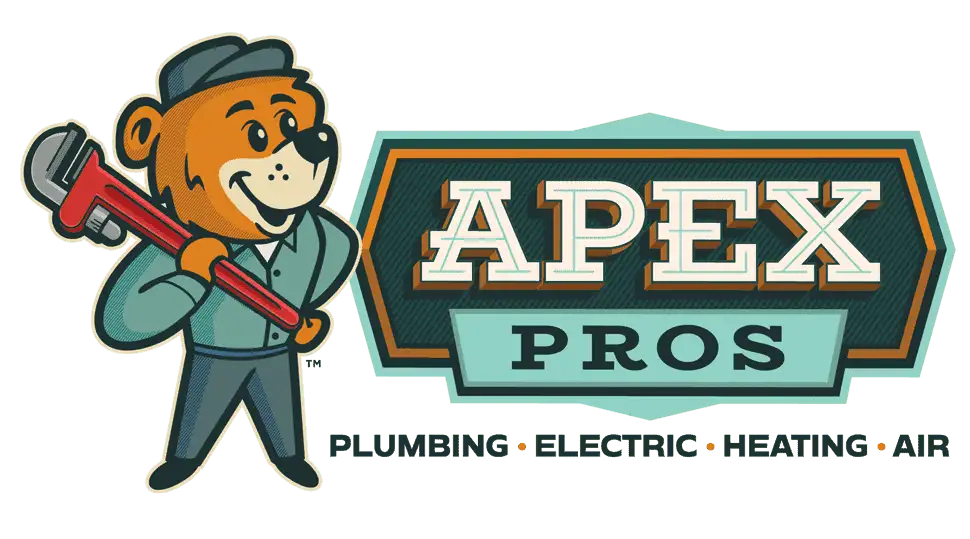Are you looking for a reliable and sustainable source of heat? A geothermal heating system provides just that, drawing heat energy from the ground below your house. At Apex Pros, our licensed geothermal contractors specialize in this highly efficient technology and can install a geothermal heat pump in your Central Ohio home.
Traditional HVAC systems use a great deal of fuel or electricity to generate heat. Geothermal heating units use a source that’s already present. Our team can help you benefit from this by evaluating the specific heating needs of your home, planning the project (geothermal installation is often complex), and explaining your options. They also answer all your questions and provide a free estimate. Read Our 5 Star Reviews!
What Is Geothermal Heating? How It Works in Central Ohio
A geothermal heating system differs from traditional HVAC equipment in that it uses naturally warm temperatures from underground. Heat from here is moved through pipes to your home. In Central Ohio, ground temperatures just a few feet under the surface remain at a steady 55℉ year-round.
The system typically includes a heat pump and a ground loop, or a series of underground pipes that circulate refrigerant or water that absorbs heat. In winter, this heat is transferred to your home. The heat pump can also operate in cooling mode. Once heat is absorbed from indoors, the system transfers it underground.
Cost of Geothermal System Installation: What Factors Matter
In Central Ohio, installing a residential geothermal heating system can range from under $5,000 to over $50,000 (in 2025 dollars), according to data from Angi. Many different factors can affect the total cost, including:
- Type of Equipment: Geothermal heat pumps are available in different qualities and ratings. A high-quality system with a high Energy Efficiency Ratio (EER) and Coefficient of Performance (COP) generally costs more than one with a lower efficiency rating.
- Ground Loop Configuration: A horizontal ground loop is the most common residential geothermal heating system configuration. Vertical loops require deeper digging and can be more expensive. However, systems that use a pond or lake (if one is on your property) are often less costly to install.
- System Size: The capacity of the heat pump and its heating or cooling load is a significant cost factor. The size of your home is also an important consideration, along with the quality of its insulation.
- Installation Complexity: Expect to pay higher costs if the heat pump and ground loop are complicated to install. Home upgrades and retrofits can add to the expense, especially if your ductwork needs to be updated or replaced. Labor alone can account for up to 70% of the cost of installation.
- Site Conditions: The soil and rock type on your property can determine what material the installer must use. Costs vary based on the type of material. The accessibility of your property to large machinery also matters, and you’ll pay for soil testing, excavation, regrading, trenching, piping, and other work.
You must also consider lifetime operating, maintenance, and repair costs. However, geothermal heating systems can save significantly on your utility bills, while tax credits (up to 30% of the installation cost) and rebates can help make things more affordable.
Energy Savings & Environmental Benefits of Geothermal Heating
The U.S. Department of Energy has estimated that a geothermal heat pump can lower heating and cooling bills by as much as 65%. Geothermal systems provide not just consistent comfort throughout the year. They can also capture heat to provide hot water (via a desuperheater), further saving on energy costs. The environmental benefits of geothermal heating are far-reaching:
- Reduced demand on the electrical grid.
- Fewer carbon dioxide and other greenhouse gas emissions.
- Reduced use of fossil fuels.
- Heat is always naturally available underground.
- Geothermal equipment produces less noise.
- No risk of carbon monoxide leaks.
Geothermal vs. Traditional Heating Options for Ohio Homes
Furnaces are still popular for residential heating. But traditional systems, while more affordable to install, don’t come close when you consider energy efficiency. They also don’t last as long. Geothermal heating systems are less expensive to operate and have a longer lifespan, saving on energy and replacement costs during that period.
Geothermal equipment also eliminates other downsides of traditional systems. Aside from cost savings and sustainable heating, they provide more effective indoor comfort. You won’t have hot and cold spots around your home. There’s also less noise, thanks to fewer parts, quieter fans, and the heat exchange process occurring underground.
Maintenance, Repair & Lifespan of Geothermal Systems
The heat pump can last up to 25 years, and underground piping for 50 years or more, which equates to long-term savings. By comparison, most furnaces can last 15 to 20 years. A geothermal system provides heating and cooling, so you don’t have to worry about replacing your furnace and air conditioner.
With proper maintenance, your geothermal equipment can run reliably for several decades. We recommend maintenance every year to maximize its lifespan. At Apex Pros, we also provide geothermal heating repair services. Ground loop repairs can be costly, but our licensed geothermal contractors in Ohio diagnose and fix any issue promptly to get the system running again.
Certified Installers & Permit Requirements in Central Ohio
At Apex Pros, our installers have the certification and training to properly install a geothermal system. They are extensively trained and have all the tools needed to install it efficiently. We work with you throughout the entire process, from selecting a system to running a final test on it. Obtaining a permit (the cost of which varies depending on the location and nature of the installation) is also a required step. In Ohio, a state permit isn’t required for a closed-loop system, but a city or county permit is needed.
How to Choose the Right Geothermal System for Your Property
During installation, our technicians install the heat pump, ductwork, plastic refrigerant piping, and other components. Grout is often placed around underground pipes to minimize thermal losses. While quality installation is important, it’s also essential to find the right system for your home.
There are two main types of heating systems to consider. In addition to the ground source heat pump, you must also consider the pipe configuration. These are the two basic variants:
- Closed Loop: The piping through which the heat transfer fluid flows is installed in either a vertical loop, which requires drilling a well, or a horizontal loop that distributes the piping in more shallow ground beneath your yard. Vertical loops require less land, so are better suited for smaller properties.
- Open Loop: Groundwater is pumped up via a well into your home. Heat transfer then allows heating or cooling to take place. Next, the water is discharged into a return well or surface reservoir. State or local code requirements often restrict this type of installation.
Our technicians help choose a heating system by looking at the size of your property, the local climate, and soil conditions. Your home’s heating and cooling load is also important.
Apex Pros: Your Local Expert for Geothermal Heating
We help homeowners throughout Central Ohio see the benefits of geothermal heating. Our technicians are knowledgeable about the latest geothermal solutions and the local climate and soil conditions. The technology works well in the region’s climate, since the temperature a few feet underground is constant year-round, while seasonal temperatures fluctuate dramatically.
No installation challenge is too difficult for us to handle. We’re committed to providing 5-star service to our customers, from our free estimates to our satisfaction guarantee to the educational resources at our Learning Center. To learn more about your options and to schedule a geothermal system installation, contact Apex Pros today!






